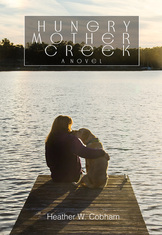|
Paddling on the Neuse River brings me great joy. Last week I went out on my stand up paddle board at dawn. I watched the sun rise, the osprey fish and the dolphins play in the pink light. I paddled for over an hour, grateful for a healthy body, good balance and the cup of coffee waiting for me at home. Life was good.
But was it? I went into work. A client recently diagnosed with ALS wiped her tears by lowering her head to the Kleenex in her hand; she could no longer lift her arms; another client recounted over twenty years of physical and emotional abuse beginning at the age of nine; a third was reeling from the infidelity of a partner. At the end of the day I reflected on my morning. How could I have been happy when there was so much suffering? Many of my clients rarely experience positive emotions. A good day may simply be a decrease in the intensity of their depression, grief, anxiety, or maybe feeling neutral but rarely something as positive as what I’d felt that morning. Every few years I wrestle with this conundrum. How can I authentically express joy when I’m acutely aware of other’s pain? Is it OK to sing in the shower or laugh until I have a stomach ache when I know others can’t shower without help or don’t even remember the last time they laughed? And these are just the people I personally know. What about the struggles of the Syrian refugees, young girls sold as sex slaves, victims of the war in Sudan and of course I could go on. Often in a moment of happiness, guilt washes over me when I think of others coping with huge challenges. As I strive to be compassionate and decrease the suffering of others can I contain their pain, as well as my own, while simultaneously experiencing joy? If I look to our society for the answer it seems I should pick joy or suffering. We live in a dualistic culture where things need to be either one way or the other: good or evil, same or different, liberal or conservative, happy or sad. As I gain life experience I feel this perspective contributes to suffering, both personally and globally. The answer lies in the non-dual approach, yes and, instead of either or. Yes I can be emphatic with my clients, and I can fully experience the beauty, love and happiness in the world. In fact I have to in order to be of use to others. If I come into work overwhelmed with my clients' experiences and the atrocities happening around the world, I have little to offer. How can I shine a ray of hope into the lives of others when it’s extinguished in me? Mahatma Gandhi said it perfectly, “You must be the change you wish to see in the world”. If I want others to experience love, peace and beauty it’s imperative I also do this. Feeling guilty and overwhelmed turns the focus to me and my emotional state rather then outward to those people and situations I’m trying to transform. Recent research supports the value of positive emotions in impacting change. The broaden and build theory, introduced by Barbara Fredrickson, a sociologist at the University of North Carolina, Chapel Hill, poses that positive emotions trigger broadened, curious, and optimistic patterns of thought, together with more spontaneous and energetic behavior. Emotional states such as joy, serenity, gratitude, love and awe improve our problem solving skills, help us learn new information, create greater social bonds, and promote resilience and optimism. These attributes give us the tools needed to create positive change at a individual and global level. The social contagion theory is another line of research supporting the benefits of a positive mood. It states that our emotions have the power to influence those around us. We can change lives for the better simply by walking out the door in a state of gratitude or peace. We’ve all experienced this when our mood shifts because of who we’re with. The challenge here is that in order to authentically experience the full spectrum of positive emotions so that we have the hope and energy to help others, we also have to experience the negative ones. They come from the same source. We can turn down the volume on emotional pain but that also mutes our ability to experience joy. It’s important to allow ourselves to feel sadness, grief, and anger, knowing that the negative feelings will ebb and flow depending on their intensity, but eventually subside. As we allow the negative emotions to flow through us, rather than stagnate, we create the space for the positive ones. Our natural instinct is to avoid pain, so without conscious intention we push our difficult feelings aside. Our busy schedules, Netflix and social media are only too happy to help with this. In order to process pain and create joy, we need daily practices that connect us with our feelings. These practices vary widely depending on the person but can include mindfulness, talking to a friend or therapist, gratitude, journaling, creating art, spending time in nature, exercising or spiritual practices such as prayer and meditation. Let in the the joy and suffering and embrace the paradox that is life. Yes there is abuse, hunger and sickness in our world and there is awe inspiring beauty, acts of kindness and great love. Yes I can cry for a client on the way home from work and I can dance in the kitchen with my labrador while I make dinner that night. To live a meaningful life and positively impact others, we must not deny the pain or feel guilty about the joy. The pain tells us there is something wrong and the joy gives us the hope and energy to do something about it.
2 Comments
Debra
6/6/2016 07:49:39 am
Thank you for this moving reflection. It is a challenge to hold pain and joy together, and yet that is what it means to be fully alive. I keep learning this lesson as a parent, a wife, a family member, a friend, a minister and a caring person. It isn't unfaithful to be joyous in spite of the suffering of those near to you or the stranger. Pain and suffering come to all of us, making the moments of beauty, laughter and delight all the more precious. I believe these moments of grace uphold us through suffering and give us an open-heartedness that can transform even pain into something greater. Love is made of this, being present to each other in joy and in pain. Faith is made of this, that the divine is present to us through it all. And Hope is made of this, my pain and your pain are seen and held, while the flower still blooms, the touch still comforts and the sun still rises.
Reply
Leave a Reply. |
Archives
November 2023
Categories |



 RSS Feed
RSS Feed